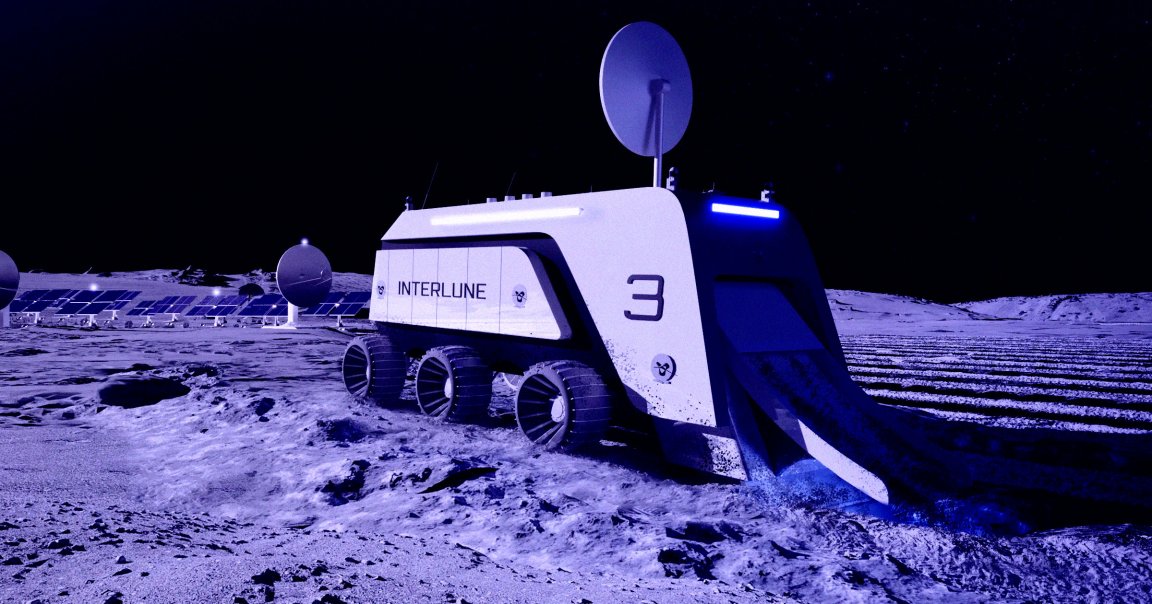
The United States and China are caught in a race to return to the Moon. The two superpowers are hoping to reach the lunar surface by 2028 and 2030, respectively, in a rivalry that could have sweeping geopolitical implications.
And it’s not just a matter of furthering our scientific understanding of our closest cosmic neighbor, either — companies are clamoring to extract highly valuable resources from the Moon, as Islamabad-based Centre for Aerospace & Security Studies research assistant Mustafa Bilal wrote in a new opinion piece for SpaceNews.
Case in point, Helsinki-based cryogenics company Bluefors signed an agreement with space commercialization startup Interlune last month, agreeing to purchase up to ten thousand liters of lunar helium-3 extracted from the Moon, a deal that it says could be worth $300 million.
Helium-3, a stable isotope of helium, is a highly sought-after resource, as it could fuel nuclear power reactors either on the Moon or back home, or help cool quantum computers. It’s extremely rare on Earth, but more common on the Moon, thanks to solar winds bombarding its unprotected surface with the particles, making it a motivating factor for the private industry to reach the lunar surface.
Interlune has a tough task ahead of it to prove that harvesting helium-3 on the Moon is economically feasible. For one, the company’s excavators may have to chew through millions of tons of regolith to harvest enough of the isotope, as Forbes reported last month, as it’s not exactly abundant. Getting the required equipment to the Moon could prove to be astronomically expensive, making it a high-risk bet.
Interlune is far from alone. There’s a whole ecosystem of companies planning to mine lunar resources. For instance, Jeff Bezos’ Blue Origin signed an agreement late last month to map resources, including helium-3 and water ice, from orbit, “assess them on the ground, and harness them in situ.”
“In addition to helium-3, water ice on the moon is a critical resource because it can be processed into drinking water, oxygen and rocket fuel,” Bilal wrote. “Therefore, against incredible odds due to technical difficulties, a combination of private and state interests is pushing ahead with the commercialization of moon mining.”
Resources like helium-3 could allow nations to establish a more permanent presence on Earth’s natural satellite, which experts have argued could determine the winner of the ongoing space race. For one, lunar bases won’t be able to rely entirely on solar panels since night lasts two Earth weeks, making nuclear power there more lucrative.
“For this reason, the first nation with a nuclear power source on the moon would in fact be able to impose de facto if not de jure a ‘keep out zone’ for safety purposes, and thus would set the precedent for the legal environment of lunar operations in which subsequent entrants would operate,” Bilal wrote.
While companies are already signing deals to extract and sell potentially valuable resources on the Moon, many questions remain. For one, establishing an economy in the Moon’s orbit as envisioned by NASA is clearly still many years out — if it could ever be practical — with companies like SpaceX only beginning to develop reusable methods of transportation that could reliably bridge the gulf between worlds.
And we don’t even know for sure how much helium-3 there is on the Moon, let alone how to actually use it as a source of reliable energy in the form of fusion reactors, a concept that has remained highly elusive despite many decades of research.
Still, Interlune is hoping to send a multispectral camera to the lunar surface as part of Astrobotic’s Griffin-1 lander sometime next year to estimate the concentration of helium-3 in regolith — in hopes of accelerating a gold rush on the Moon.
More on lunar resources: Scientists Say There’s Over a Trillion Dollars of Platinum Waiting to Be Extracted From the Moon’s Craters